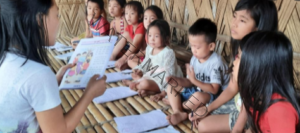Arunachal Pradesh
Architecture & History
- Arunachal Pradesh is a mountainous stretch of land in the extreme northeastern part of India.
- The international borders are shared with the kingdom of Bhutan to the west, the Tibet Autonomous Region of China to the north, Burma (Myanmar) in the south.
- People of Arunachal Pradesh build their houses with Wood & Bamboo.
- They use thatched, Chinese Palm leaves, Cane leaves and Jungle Banana leaves as roof material that are found in abundance in this hilly region.
- Arunachal Pradesh, was formerly known as the North East Frontier Agency, a name given by the British colonial rulers.
- The area was made the Indian union territory of Arunachal Pradesh in 1972, and in 1987 it became an Indian state. Until then the region was identified in the State of Assam.
- The capital of Arunachal Pradesh is Itanagar.
- People of the state practice agriculture and wetland cultivation.
- Most of the earning hands practice the tradition of craftsmanship, including cane and bamboo work, weaving and basket making.
- There are several tribes living in the region who worship the sun and the moon, and this religion is called Donyi-Polo.
- Arunachal Pradesh is popularly called the “Land of the Rising Sun,”.
Demographic Location
- Arunachal Pradesh is made of deep valleys guarded by highland plateaus and ridges that rise to the peaks of the Great Himalayas.
- The state can be divided into three broad geographic regions.
- Far to the south is a series of foothills, similar in type to the Shivalik Range that starts rising from the plains. These hills rise rapidly northward to the Lesser Himalayas.
- Kangto is the highest peak in the state that dominates the skyscape reaching about 23,260 feet in height.
- Tawang Monastery one of the more known monastery is located in the northwest ranges of Arunachal Pradesh.
- The major rivers of the state are the Brahmaputra also known by the name of Tsangpo has three tributaries.
- Brahmaputra river flows eastward from Mansarovar Lake located in Tibet before dipping south through the Himalayas into north-central Arunachal Pradesh.
- The Brahmaputra emerges into the northern edge of the Assam plains near the town of Pasighat. It is joined by the Dibang and the Lohit rivers a short distance beyond Pasighat.
- The Kameng and other rivers in the area on the southern side of the mountains. The Tirap River flows in the southeastern part of the state.
- River valleys are characterized by rich alluvial soils that are highly fertile for farming.
- The major soil types of the state are :- Inceptisols, Entisols, Ultisols
People, Rituals & Language
- Arunachal Pradesh is the home to people originating from Tibet and the hilly region of western Myanmar.
- Almost two-third of the state’s people belong to Scheduled Tribes.
- The Adi constitute the largest tribal group in the state, their house are located in central part of the region.
- The Mishmi live in the northeastern hills, and the Wancho, Nocte, and Tangsa live in the southeastern district of Tirap.
- The tribal people earn their means of living by hunting, fishing, and gathering forest products.
- The tribal groups speak about 50 languages and dialects. They speak English as official language. The local language is Hindi.
- Ritual sacrifice is common, a domesticated gaur (wild ox) is valued as the sacrificial animal.
- Some people of Arunachal Pradesh practice Hinduism, especially those near the lowlands approaching the border with Assam.
- Arunachal Pradesh has the lowest population density amongst any state of India. Most of the populace is concentrated in the low-lying valleys, with the hilly people living in scattered upland communities.
Season & Climate
- The climate of Arunachal Pradesh varies according to the topography and height.
- The foothill areas have hot and humid climate. Average temperature decrease as elevation increase in the mountains.
- Precipitation in the state generally follows the wet-dry monsoon pattern mostly along with the southwest monsoon.
Culture & Education
- Tribal people in Arunachal Pradesh wear distinctive garments and head-dress.
- The art of weaving is important, and textile designs are unique to each group.
- Dances are enjoyed by entire community.
- Losar, Mopin, and Solung are major tribal festivals. At such festivals, villagers often drink millet or rice beer, as well as tea.
Famous Spots
Some of the historical monuments and famous spots to visit in Arunachal Pradesh are :
- Pangsau Pass - Historic Walking Areas.
- Mayodiya Pass - Points of Interest & Landmarks.
- Bomdila Monastery - Architectural Buildings and Religious Sites.
- Tawang Buddhist Monastery - Place of meditation and worship
- Jaswant Garh
- Gompa - Place of visit and landmark
- Dihang Biosphere Reserve
- The Golden Pagoda.
Aqua-life, Flora and Fauna
- More than half of the population of Arunachal Pradesh earns from agriculture, but only a tiny portion of the land is under cultivation.
- Farmers of the state produce rice, corn (maize), millet, and buckwheat as chief crops. State's major commercial crops include oilseeds, potatoes, ginger, sugarcane, and vegetables.
- Hillsides are cleared for shifting cultivation (jhum) near Along, central Arunachal Pradesh, India.
- Mithuns and yaks are important animals stocks in the higher regions. The Monpa herd sheep is found here.
- Some groups also raise fish through aquaculture.
- Arunachal Pradesh, has abundance of forest cover, once derived a significant portion of its earnings from logging and forestry.
- Arunachal Pradesh’s has diverse terrain, climate, and soils that is reflected in its fauna and flora.
- It has wide belt of swampy rainforest lying along the foothills.
- Arunachal Pradesh has an abundance of fish variety, snakes, and birds.










